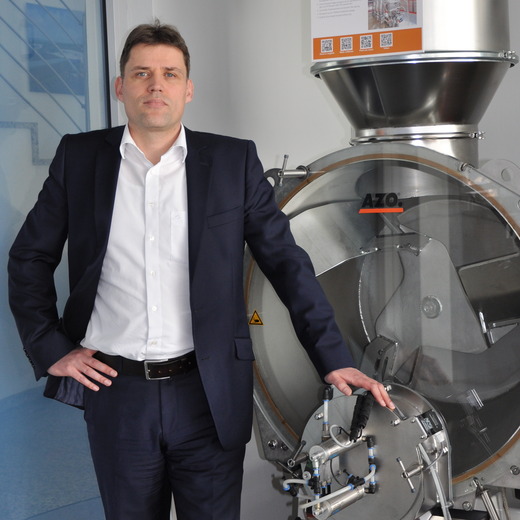
Thomas Stegmeier
Head of Technical Sales AZO®Chem/AZO®Poly

Conventional plastics are made from petroleum. It is well known that this has some disadvantages. For one thing, petroleum is a fossil raw material that is not available in infinite quantities. On the other hand, these conventionally produced plastics cannot be degraded naturally and thus make a significant contribution to the steadily increasing environmental pollution. To counteract this, there are now numerous plastics that are made from renewable raw materials and are completely biodegradable - the so-called biopolymers.
For the production of such biopolymers, numerous raw materials have to be handled in parallel - and this is where AZO comes in. With our expertise in raw material automation, we are able to meet the diverse raw material requirements and make our contribution to the production of high-quality biopolymers.
An essential raw material in the production of biopolymers are fibres such as cellulose or lignin. These natural substances provide the necessary hardness and strength of the resulting plastic and are completely biodegradable.
However, these fibres pose a particular challenge for raw material handling, as they are highly bridging and highly flammable. When designing a plant, these raw material properties must be taken into account by providing the necessary explosion protection as well as appropriate solutions for discharge and conveying.
With our discharge and conveying systems, we can feed even difficult-flowing products safely and efficiently into the process while complying with the strictest ATEX requirements.

Another important raw material in the production of biopolymers is starch. This raw material tends to adhere and thus presents a particular challenge in the product feed. However, discharge aids, such as our AZO vibratory trays, can make this task much easier.
But since starch is not only adhesive but also highly flammable, special measures for explosion protection must be taken. This means that conveying must take place as far as possible under exclusion of oxygen and without sparking or other ignition sources. This requires a special design of the entire plant.
At AZO, we are very familiar with this raw material character and have the right solution for you for every challenge.
Polylactide is a polyester based on renewable raw materials such as sugar cane or corn. The material, which is made up of lactic acid molecules, is one of the biodegradable plastics.
In raw material automation, the handling of polylactides requires special care because they are hygroscopic and must therefore be handled under exclusion of atmospheric humidity.
Therefore, our big-bag discharge station AGW or our sack discharge station with integrated glovebox and sluice chamber are suitable for product feeding. This way, the product can be safely emptied from the container and transferred to the subsequent process without coming into contact with harmful environmental influences.